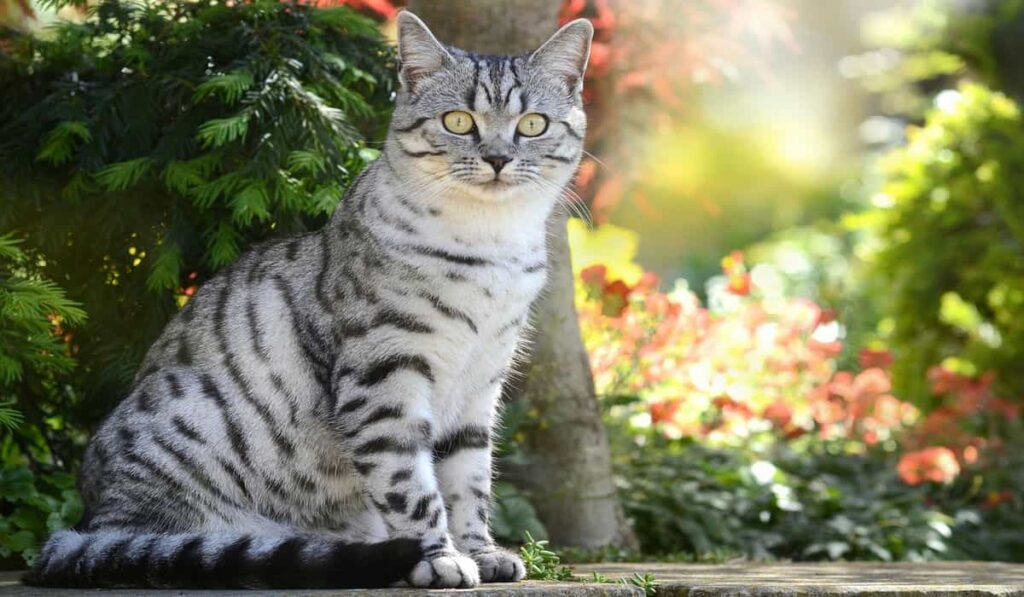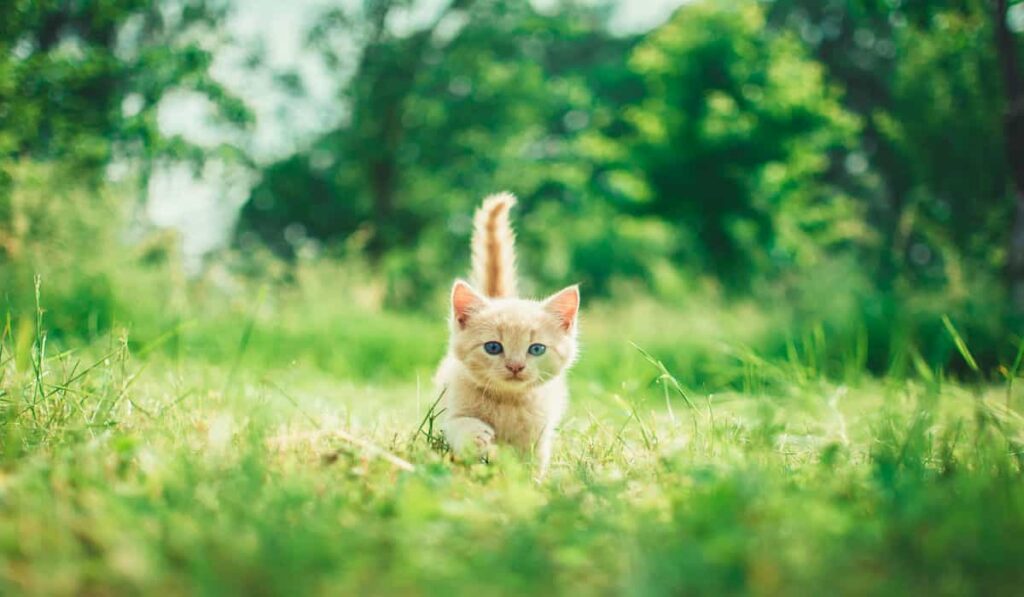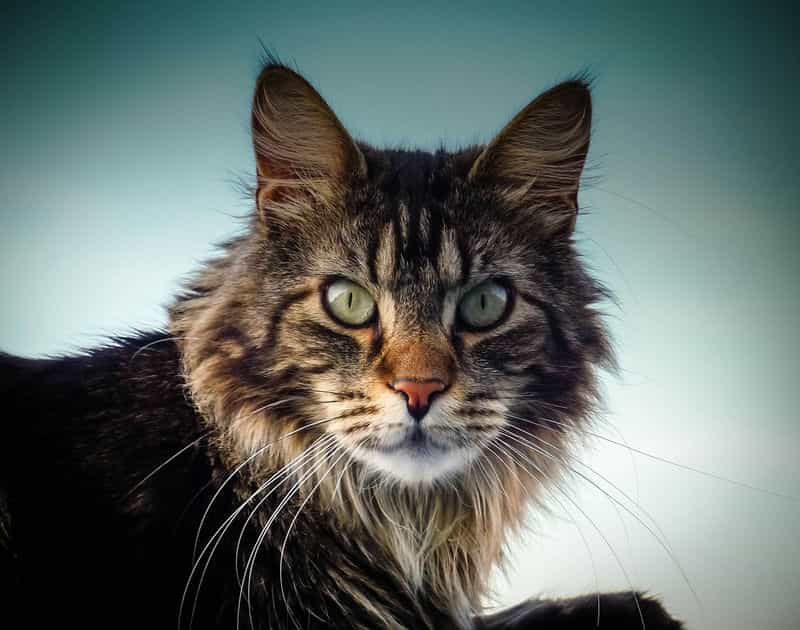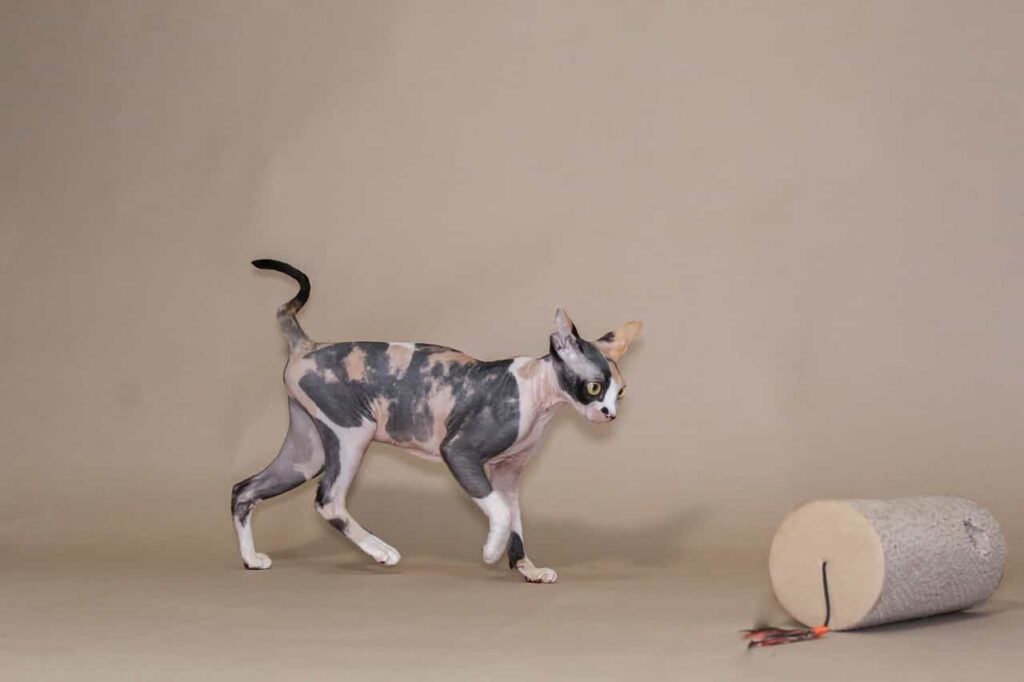Oriental Longhair cat is an outstanding cat breed. This breed is also known as the Foreign Longhair cat, Mandarin cat. It was also known as British Angora till 2002 but the British cat fanciers renamed the breed to avoid confusion with the Turkish Angora breed.
However, the breed is closely related to the Oriental Shorthair breed and isn’t a globally known breed. Some cat registries recognized it as a separate breed such as The International Cat Association (TICA). Some cat registries like Cat Fancier’s Association (CFA) consider Oriental Longhairs only as a division of domestic cats or Oriental Shorthair cats.
The breed has a very close relationship and also resembles the Siamese breed. Its long and Silky coats have an array of color and pattern combinations.
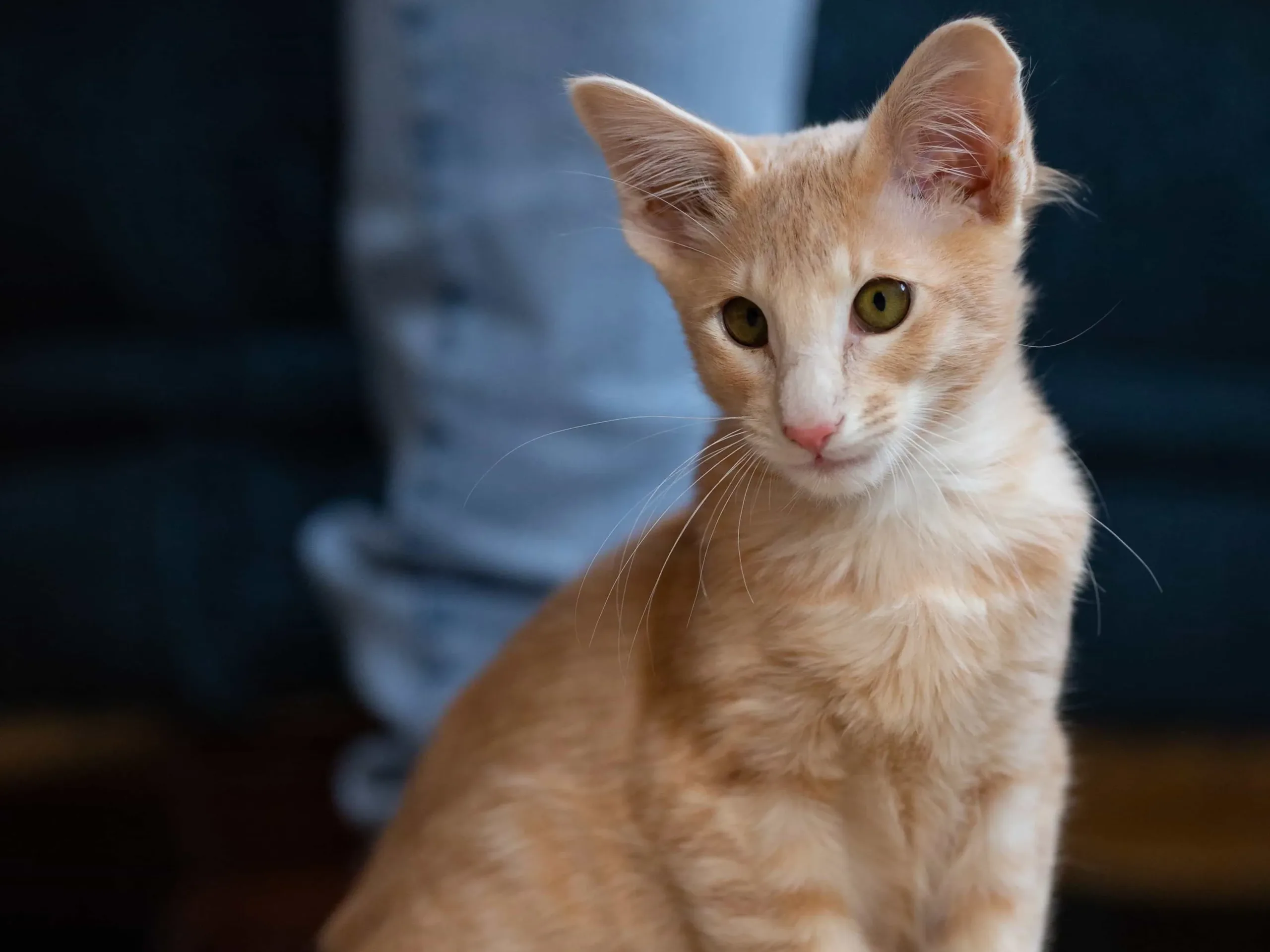

Table of contents
Breed specialty of the Oriental Longhair cats
Other names:
British Angora, Mandarin, Javanese.
Personality:
Friendly, curious, sociable, affectionate, and talkative.
Body height:
up to 10 inches
Body weight:
up to 12 pounds
Body length:
up to 18 inches
Coat length:
long and semi-long
Coat colors:
White, Black, Blue, Chocolate, Lilac, Cinnamon, Caramel, Red, Apricot, Cream, Fawn, and so on.
Coat pattern:
Bi-color, Pointed, Tabby, Patched Tabby, Classic Tabby, Mackerel Tabby, Spotted Tabby, Ticked Tabby, Parti-color, Solid, Smocked, Shaded.
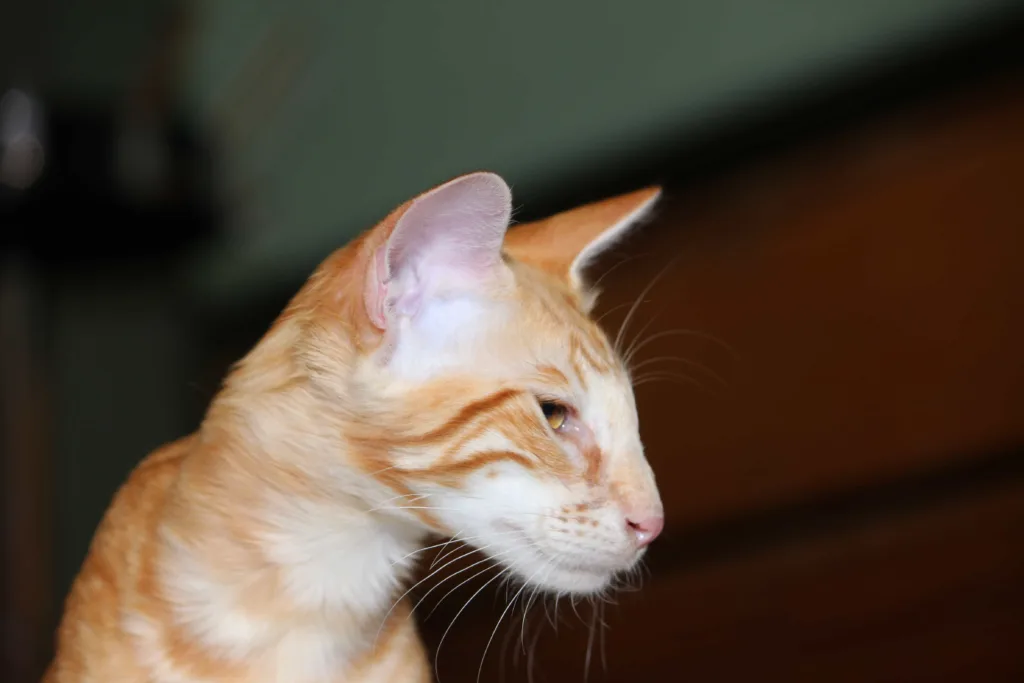

Eye color:
The dominating eye color is Green but White Oriental Shorthairs have Green or Blue-colored and even odd eyes (2 colors in 2 eyes).
Activity:
High
Playfulness:
High
Intelligence:
Medium
Friendliness to other children and pets:
High
Maintenance:
Low
Need of attention:
High
Dependency:
High
Allergenic tendency:
No
Shedding Amount:
High during the shedding season
Life circle:
Up to 15 years
Origin:
The United Kingdom
Origin of the breed- Oriental Longhair
Oriental cats are categorized as both long and short-haired. The longhaired category is more common than the Longhaired. There is a rumor that the journey of the breed is related to the famous Persian cats and began in Turkeye.
In the mid-20th century, the breeders of the United Kingdom wanted to extend the Siamese-like cat varieties with greater coat colors and patterns. So, they started to cross the Siamese breed with other breeds like Russian Blue, British Shorthair, and Abyssian.
So the breed Oriental Longhair emerged like this. They were imported to the United States by the 1970s and became very popular there. The breed was recognized as British Angora till 2002 but the British cat fanciers changed the name to Foreign Longhair or Oriental Longhair to demolish the confusion with the Turkish Angora breed.
However, the Cat Fancier’s Association recognized the Oriental Shorthair breed and the Oriental Longhair as a division of Domestic cats or the Oriental Shorthair breed in 1977. The International Cat Association (TICA) recognized it as a separate breed in 1979. CFA listed Oriental Longhairs in its listing in 1995.
The appearance of the Oriental Shorthair breed
The Oriental Shorthair is a medium-sized breed with a long. lithe, and tubular body. Though their body looks fragile but agile and muscled. The body is neither bony nor weak and reflects a fine and beautiful structure. The body is getting support with 4 long, slandered legs and there is a long and bushy tail at the end of the body.
Their head is wedge-shaped, smooth, and long, and tapers to a fine muzzle. Their ears are very large and wide-based. The necks are long, slender, and proportionate to the body. Oriental Shorthairs’ eyes are Almond-shaped and usually Green but Blue and odd eyes are accepted in completely Oriental Shorthair cats.
About Oriental Shorthair cat coat colors and patterns
The breed Oriental Shorthair has more than 300 colors and also so many patterns. Such as-
Colors:
White,
Black,
Blue,
Chocolate,
Lilac,
Cinnamon,
Caramel,
Red,
Apricot,
Cream,
Fawn, and so on.
Patterns:
- Pointed pattern:
The pointe colors in their ears, legs, paws, and tails.
- Bi-color:
It is a very common color and shaded, smoked, parti-color, and Tabby is included in the pattern. The White color is also added to this.
- Solid:
A solid coat pattern means just one dominant color is all over the body. No sports, shedding, and other varieties are visible there.
- Shaded:
The shading is in its face, sides, and tail with White, Cream, and Apricot colors and the shedding is also darker.
- Smoked:
The smoked coat pattern is visible in longhaired oriental cats. The tips and the root of the hair are White-colored.
- Parti-color:
The patterns are visible throughout their bodies and coats. It means patches. The patches may be diluted or the main color of the body.
- Tabby:
Tabby means stripes throughout the body. Define in-
Ticked Tabby:
It means shades of markings and root colors. The patches, stripes, and spots in their tails, legs, and faces. They also have hair-neckless.
Spotted Tabby:
Spotted Tabby means spots throughout the body can be both small and big.
Mackerel Tabby:
When stripes are running throughout the feline’s spinal cord, legs, and tails are ringed and an ‘M’ marking is on their forehead, it is called Mackerel Tabbies.
Classic Tabby:
When defined markings are on both sides of their body, legs are evenly barred, a hair neckless on the chest, and an ‘M’ marking on the forehead- it is called Classic Tabby.
Patched Tabby:
Patched Tabby means the collection of all Tabby patterns- that means Classic, Spotted, Mackerel, and Ticked patterns with Red patches throughout the coat.
Temperament and nature of the Oriental Longhair cat
Well, as the Oriental Longhair breed has a close connection to the Siamese breed so they’re naturally talkative and have a great personality. The Oriental cats are very, affectionate, friendly, loyal, intelligent, highly energetic, curious, and sometimes demanding. They don’t like to leave alone for long hours.
The Oriental Longhair breed loves to stay with a big family and busy household with other pets. They always in this where action is being taken. They love to play with different interactive toys, climbing trees, and also learn techniques.
In addition to that, they also love to talk to their person even when one-sided conversation is gong on, cuddle to the fav person’s lap, and an whole day napping. They never feel shy to tell you when they need more attention from you.
Nature of Oriental Longhair cat
They get more attached to any one person in the family. If you live in a small family then you must be devoted to them and keep other cats and pets together when you’re away from home. The Oriental is a very dependent breed so keeping other pets is an ideal option for you,oherwise, your pet will be sad and mischievous.
They investigate the new arrivals at the house and also greet and interact with the guests and strangers as they’re very smart and sociable. They can find their own games when they don’t have anything to do. They’re able to open drawyers, cupboards, doors, and also refrigerators.
The Oriental Longhairs’ behavior with children and other pets:
They love to stay and play with children and other pets. They don’t have any problems with them. You can leave your childrens or other pets with Oriental Longhair cats alone without any tension.
The Oriental Longhair cats are family pets:
If you want a cat that never goes aloof from you and your family then Oriental Longhair is the best choice. They are very much suitable for family life and also for first-time owners. You can take them as a furry member of your family without any hesitation.
Caring, grooming, training, and exercise tips for the Oriental Shorthair cat
Grooming:
Though the Oriental Shorthair breed is longhaired they don’t need daily coat brushing. Just a one-time brush weekly is enough for them to remove tangles, Debris, and hairballs. They don’t have double coats. So, weekly brushing and occasional bathing are enough. Occassial bathing means if their coat get dirty then you have to give a bath to them.
Their ears are surprisingly large. So, they prone to get infected and dirty. So, a weekly checking and cleaning their ears with a wet cotton ball is a must. No grooming is completed with a proper dental care. So, brush their teeth daily with cat toothpastes and brushes. It is essential for cats good health.
Caring for the Oriental Longhair cat
You may know that Oriental Shorthairs are very smart, intelligent, busy, active, and playful cats. So, they need a lot of mental stimulation, playing time, the company of the big family and other pets, and attention. So, provide them with with them lots of interactive toys, cat trees, and play fetching so that they can engaged themselves.
You must spare some times for your Oriental as they’re very attached to their owners. Either you have to be a dedicated and devoted if you’re a single owners or you must have a big family and a busy household. Otherwise, an Oriental Shorthair may not be the best for you.
Exercise:
All intelligent and smart cats need a plenty of physical and mental excercise. So, keep your smart kitty busy with various playing and brain teasers. Provide with them puzzles, play fetching, and food trees so that they get the opportunity to exercise.
Training:
It must to train any kind of pet. Teach the oriental Shorthairs to follow the come, go, do it, go the litterbox, etc. teach them to respond by calling their name. The training should be conducted for the first day but remember to train them for a short time period daily. Unless they’ll get bored and destructed from the training sessions.Teach them how and when to go to the litterbox. Potty training is very much important.
Health and problems of the Oriental Shorthair cat breed
The Oriental Shorthair is generally a healthy breed. As the breed is a purebred pedigree so they may have some inherited problems:
Serious health and problems:
Lever Amyloidosis:
When protein deposits abnormally to the liver then it is called Lever Amyloidosis. It causes the lever failure and reduces lever functions.
Dilated Cardiomayopathy:
This is inherited from the Siamese cats. Dilated Cardiomayopathy is a common heart disease among all cats.
Progressive Retianl Attrophy:
The disease decreases the grade of the Retina and gradually converted to blindness.
Mast cell Cancer:
When the nodule formation of the intestine, organs, and skin grows, it is called Mast cell Cancer.
Minor conditions:
Bladder stones:
When Calcium gets deposited and small and medium-sized stones grow in the bladder and make obstacles and pain to urinate then it is called Bladder stones.
Kinked tails and crossed eyes:
The problems are cosmetic defects and don’t make any difficulties to cats’ health. Oriental Shorthair cats got this problem by herring from Siamese cats.
Periodontal disease:
It means dental problems. Proper dental care and daily brushing are enough to avoid problems.
So, you must take care of your Oriental Shorthairs and take it to the veterinarian after every 6 months.
Shedding and hypoallergenic:
The Oriental Longhairs are longhaired cats. So, they shed in the Spring. Many people ask me that are Cats hypoallergenic or not. Well, any cat isn’t hypoallergenic but some people have allergies with furry animals. So, cats including Oriental Shorthairs are hypoallergenic for those allergenic people.
Oriental Longhair’s lifespan:
The Oriental Shorthair breed has a medium life cycle of 15 years as they belong to a fragile body structure. But in some cases, if good care is taken of the breed can live more.
Food and nutrition tips for the Oriental Shorthair cat
Oriental Longhair cats don’t require any special foods. But as the breed is very active and playful so they need a lot of protein to maintain energy and growth. Provide with them a high-quality feline diet, in addition to canned food with plenty of protein.
You also must provide with them fresh and enough water. Don’t provide them with a plastic bowl of water. Always choose a metallic bowl so that it won’t cause whisker fatigue. Plastic bowls are prone to hold bacteria in the small scratches on the bowl’s surface.
Change the water daily to provide the kitty with fresh water. You may add a water fountain so that your Oriental gets interested to drink more water.
More About Oriental Longhair cat
Oriental Longhair kittens
Oriental Longhair kittens are big-sized as their adults with the filled body but not pot-bellied. Their coats are sinning and their eyes are clear. Don’t adopt a kitty who doesn’t come to you, sit on your lap, and purr. Observe the kitty keenly when you go to visit it. Observe the situation of the breeder’s office.
You should visit them several times at the breeder’s office. Ask the breeder to see the mother and father of the kitten. If possible then see them also. A reputed and trusted breeder will ask so many questions about your home and situations so that they can make sure that you’re an ideal candidate for the kitten.
However, the kitten must be vaccinated. A good breeder must provide you with the vaccination certificate, and test results that are conducted on the kitten’s health.
Male VS Female Oriental Longhair cat
There are not so many differences between male and female Oriental Longhair cats. The male cats are bigger in size than the females. Males are 10 inches in height, 12 pounds in weight, and 18 inches in length. The females are a bit smaller than the measurement.
Besides, males are more affectionate, vocal, and sociable. That means males are closer to their owners and families. They meet and get introduced to a wider range of people.
Male Oriental Longhairs may become territorial if not neutered. Even they can mark their territory by spraying urine throughout the house if once get territorial. So, I suggest you get it neutered before it reaches sexual maturity.
The adaptability of Oriental Longhair cat in new surroundings
The Oriental Longhair cats are very smart and adaptable kitties. They can match with a new environment and people very easily and quickly. Though there are some exceptions most of the cats of the breed are like that.
You have to play an important role to adapt the new place and situations for the cat. Socialize and train them at the early stage. Give them plenty of time and the attention they need. If the cat is an old member of your family and you have shifted to another place then give it time and attention like when you brought it for the first time. Thus, the adaptability will increase in your Oriental Longhair kitty.
Cons of the breed-Orintal Longhair Cat
The breed may not be the best for your if you can’t handle those cons:
- they are very vocal. so, if you want a calm and sweet-meowing cat then the breed is not for you.
- They need a lot of company and mental stimulation. So, either you have a big family and busy household or you have to give them company all day long and keep other pets along with the Oriental. If you can’t do any of them then look for another breed.
- They’re prone to periodical disease. So, take good care of their ears and teeth.
Breed overview of the Oriental Longhair cat
The Oriental Longhair breed is extremely vocal, curious, intelligent, smart, sociable, affectionate, friendly, and also demanding cat breed. It needs a lot of attention and mental stimulation. If the cats don’t get their deserving attention, they may get mischievous.
They can find their own playing when nothing isn’t left to do. They love to stay in big houses and big families with other pets. And, they don’t like to be left alone for long periods of time. The Oriental Shorthair cats also love chidrens and other pets. They can make a good friendship with dogs very fast.
The breed is originated from the Siamese breed in the United Kingdom. Their body size is 10 inches in height, 12 pounds in weight, and 18 inches in length and the lifespan is up to 15 years. The coat size is short with more than 300 shades of color and around 12 types of coat patterns with Green eyes.
Some facts about the Oriental Longhair cat breed
- Oriental Longhair breed has more than 300 shades of coat colors.
- The breed retains its kitten-like behaviors throughout its life. They never get adults by nature.
- It is one of the larger breeds due to its vast range of coat colors and patterns.
- Some cat registries don’t recognize it as a separate breed.
- They are the entertainers. As they belong to the Siamese breed so love to be entertained and to make entertaining.
- The Oriental Longhair breed has so many names- British Angora, Foreign Longhair, Javanese, Mandarin, and so on.
How to get an Oriental Longhair cat?
First of all, you have to acquire enough knowledge and research about the breed. Remember Oriental Shorthairs are so much talkative and need a lot of attention. If possible then talk to other owners, breeders, and cat club to make sure that you and the kitty-both are fit for each other.
You can search the website of the Cat Fancier’s Association (CFA) to get lists of reputable and trusted breeders. If you’re looking for a shelter then find on the petfinder.com website. Though purebred cats are not available in shelters who knows which pet’s life will be changed because of the death, divorce, separation, and finacial crisis of its owner and it needs a new home?

